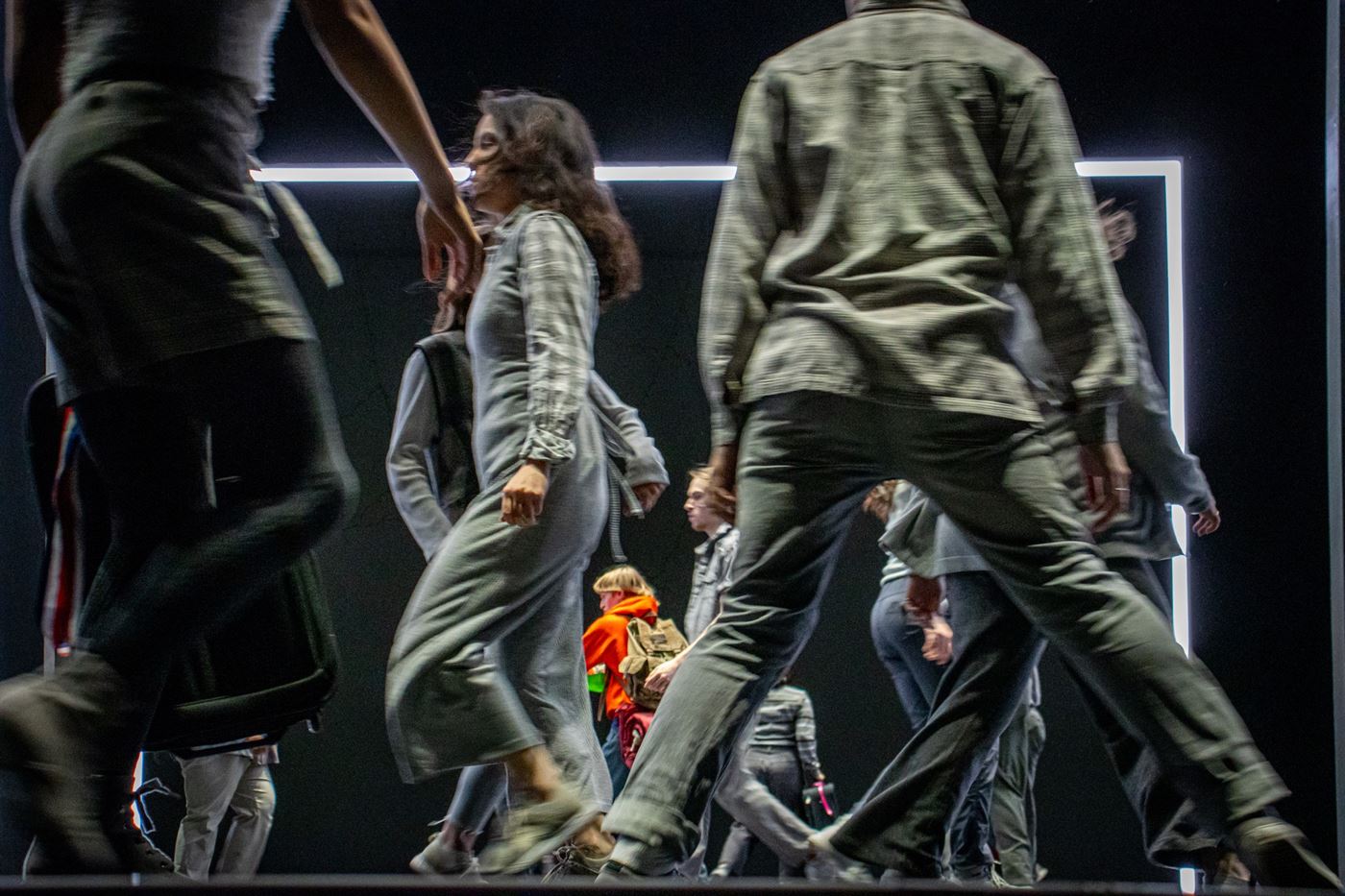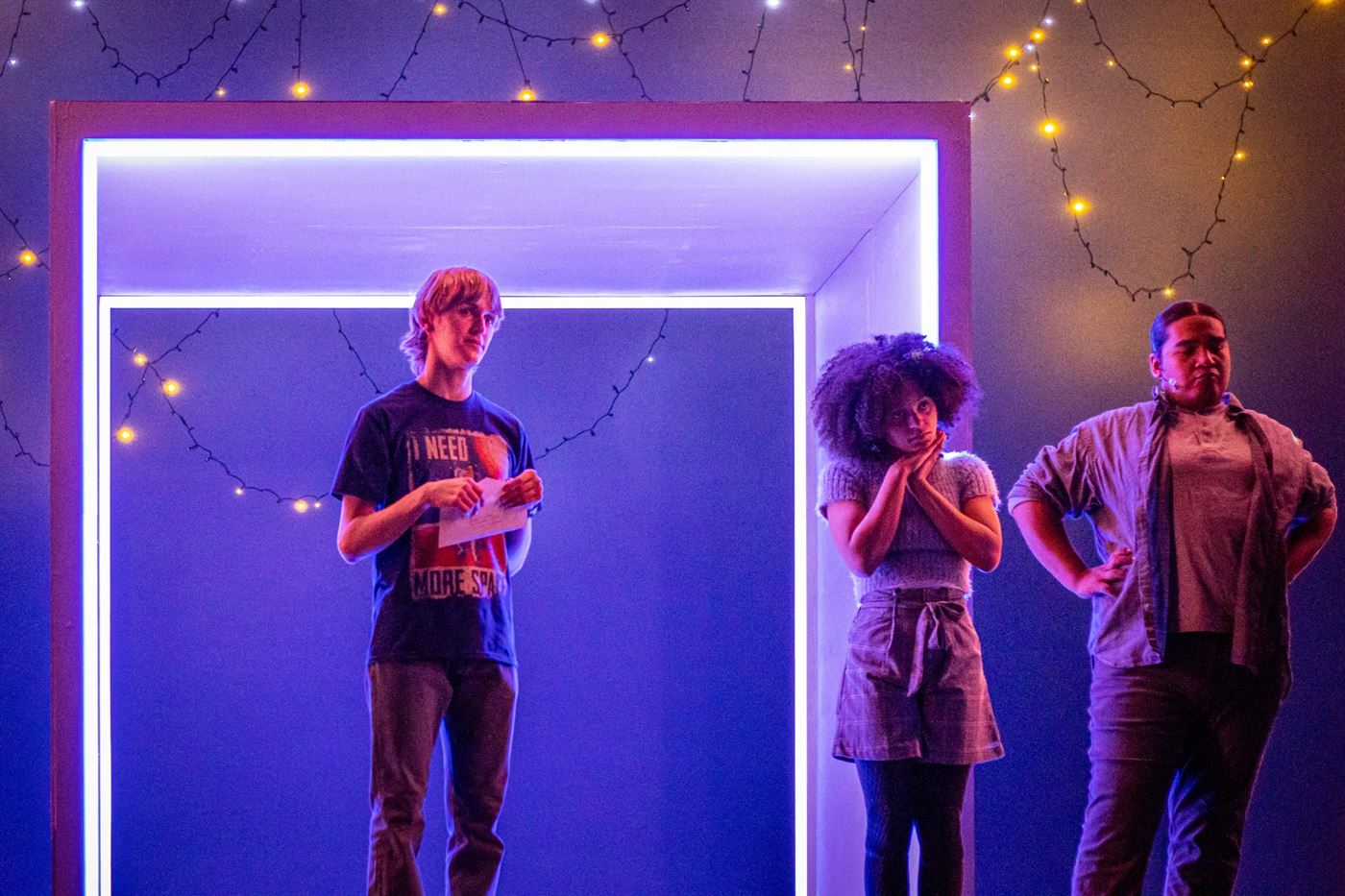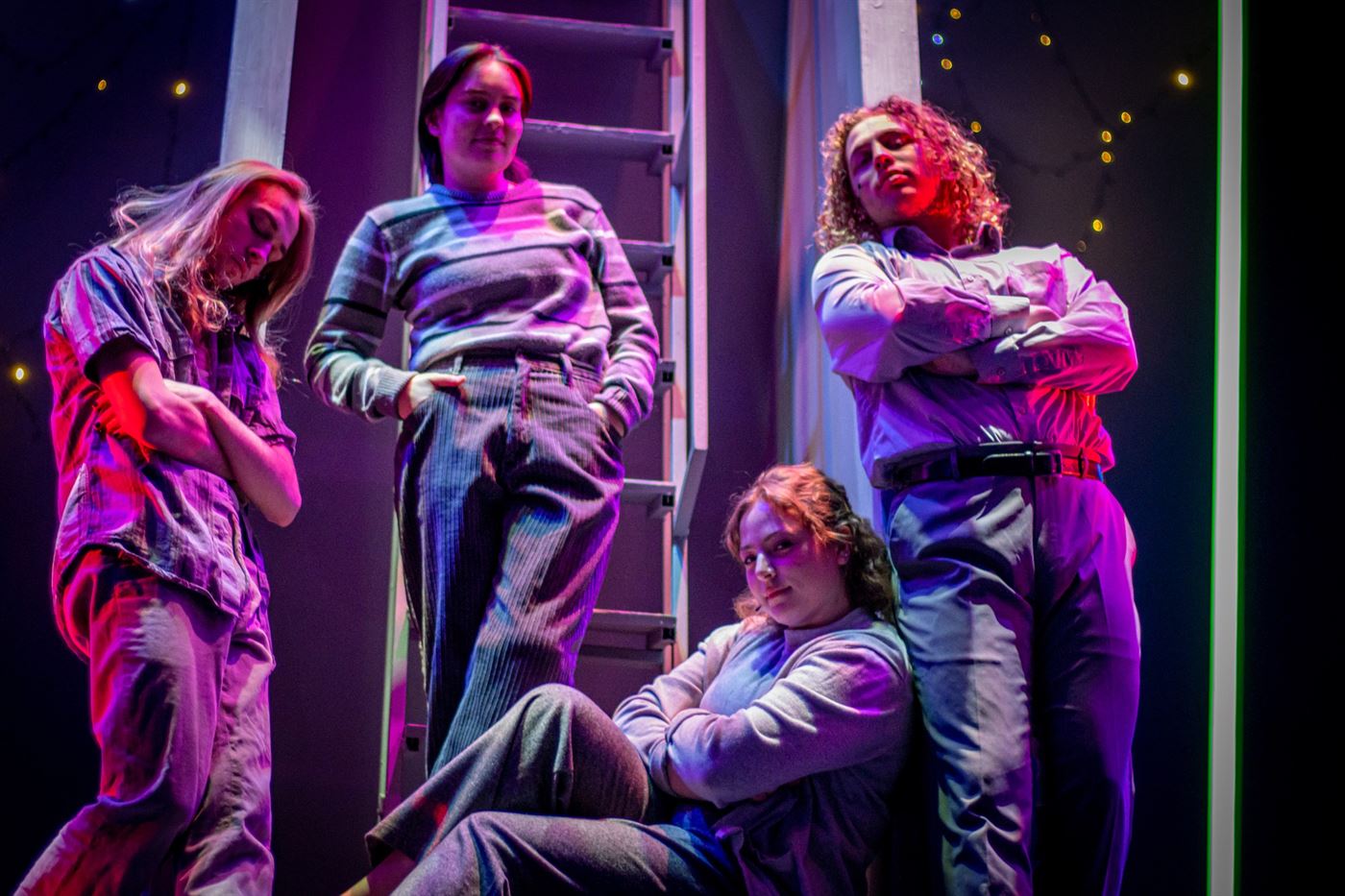When I heard Montclair State University was doing a production of “The Curious Incident of the Dog in the Night-Time,” I knew I had to see it, having been a part of my high school’s rendition my senior year.
“The Curious Incident of the Dog in the Night-Time” by Simon Stephens is a play about Christopher, a young neurodivergent boy. After discovering a dead dog in his neighbor’s yard, he sets out to investigate the case. Montclair State’s Department of Theatre and Dance put on “Curious Incident” last week with five showings between March 18-25 in Memorial Auditorium.

Christopher (Andrew Linden) feels overwhelmed in a crowded train station.
Avery Nixon | The Montclarion
In this show, projections are usually used to display what’s happening in the protagonist’s mind. When I got word projections were not being used for Montclair State’s production, I was disappointed. Hence, I went into the performance with my expectations low and my mind open.
The stage was bare, but I could see the layout: three massive LED bars running along the proscenium arch, breaking the stage into three sections, from upstage down. There were also a few strings of Christmas lights on the back wall, forming a constellation-like pattern.
One of the best parts of “Curious Incident” is the versatility of the ensemble. In this production, the ensemble acted like an extension of Christopher’s mind, with perfect choreography. Where Christopher, played by Andrew Linden, a junior theatre major with a concentration in acting, could not express himself, the ensemble did. When Christopher discussed his dreams of becoming an astronaut, the ensemble carried him. They acted as the sea when Christopher remembered his mother at the beach.
Another aspect I immediately loved was the set design, which is meant to remain simple for this production. Montclair State’s design team used four movable pieces consisting of two large cubes with two sides cut out, two massive right triangular prisms, one with a staircase through the center and one without that acted as a simple ramp. This design illustrates Christopher’s thinking process — how he breaks down complicated situations and settings into just a few cubes and triangles. The simplicity forces audiences to use their imaginations in settings like a subway platform or a police station.
The mastery of this set design becomes apparent at the end of the show.

Star Andrew Linden (left) along side ensemble members senior costume designer major Jannette Fisher (center) and junior theatre studies major Erwin Guerrero (right).
Avery Nixon | The Montclarion
After bows, Christopher does one more scene in which he demonstrates how he completed his favorite math problem in his A-level exam. Most productions use projections to display the problem, but Montclair State utilized the set pieces. The math problem involves a right triangle, so in his explanation, Christopher sits atop the staircase on his right-triangle set-piece and discusses the Pythagorean theorem. It was so simple, but this final scene made the entire design make sense. Needless to say, I was blown away.
Even with all these beautiful aspects, such as the picture-perfect visuals and attractive costumes, my complaints lie with two things: the accents and audio. The actors’ British accents were slightly inconsistent, but this did not distract from the show.
My second minor complaint is in cueing of the microphones. At some points, it seemed like the audio engineer had turned off the actor’s microphones in between their lines while the actor was onstage. It only happened three times and was easily recovered, but this was a problem I have seen before in Montclair State productions. I have never seen this done before in other shows, and I was quite confused as to why this is common practice here.
All in all, Montclair State’s production of “Curious Incident” blew me away. It scored a 9.5/10 on my scale, and the only reason it wasn’t a 10 was that it wasn’t produced by my high school. To all involved in this show, I commend you, and I’m jealous I couldn’t be a part of this amazing production.



